
Yerevan's Homeless are Freezing
For Ira Kritina and Svetlana Golubkina, the New Year came a few days later on January 3 when their friend Vika visited with food and drinks. She didn't come for a few hours, but agreed to spend the night with her two Russian friends in the open air underneath a polythene tent at the Komitas Pantheon. The women don't remember when they fell asleep that night, but they do remember waking up screaming.
"It was nearly 3 am and everything had burned. I managed to run out even though my foot was burnt. Everything we had, including our clothes and covers, were also burnt," Ira says, four days after the incident. Her left hand and half of her face was also burnt and has started to inflame. "I apply oil on the wound," she says, adding that none of them know who burned their "home" down. They saw no one.
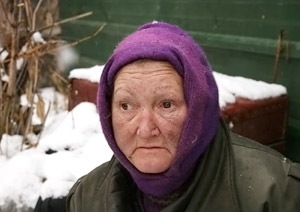 |
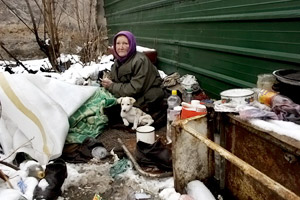 |
 |
 |
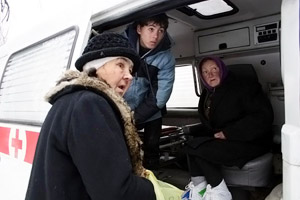 |
 |
 |
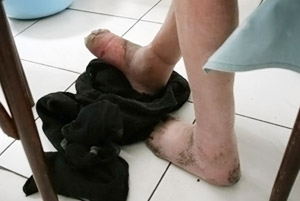 |
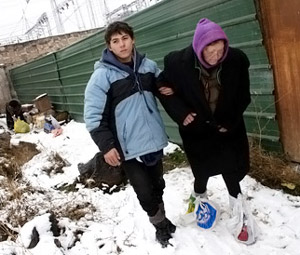 |
Aram, one of the tenants living in a neighbouring building who visits them occasionally, thinks that the reason for the fire was an improperly extinguished cigarette. On 6 January -- Christmas Day -- huddled against one of the walls surrounding Komitas Park, the two women were lying half covered in polythene. The remains of their clothes and scraps of food lie strewn around.
Near the wall is a line on which the women hang their underwear, guarded by a Kashtanka, a dog whose two-month-old puppy was also wounded by the fire and lies sheltered between the two women. Ira and Svetlana have lived in the Komitas Park for almost four months already, although on and off, Svetlana has lived here for longer.
Before that, she lived with another friend who now moved in with "the man she loves" even though he is also homeless. The two women raise their heads when someone approaches their shelter.
"I am from the Russian city of Chelyabinsk, but have lived in Armenia since 1967," says 55-year-old Svetlana. "My family came here to help build the Yerevan Hydro Energy Power Station. We received a three room apartment, and I finished school here. I received a passport, but it is the old Soviet one. I can't get a new Armenian passport because I am not registered at any address. I had to sell my apartment."
Her friend, 59-year-old Ira, was born in Kaliningrad and never owned an apartment in Yerevan. Instead, she rented one and for the past seven years, lived in Saritagh district of the capital. "I didn't pay rent there," she explain, "but instead helped my landlady clean a petrol station. Then, everything was stolen and I had nowhere to go, and had no choice but to come and live with Sveta."
The two homeless women earn their daily bread by collecting bottles from rubbish bins and selling them. "They never beg," says 15-year-old Vadim, son of a Russian mother who was a friend of Ira and Svetlana, and an Armenian father. Vadim's mother died last spring, and his father left for Germany before he was born. He doesn't sleep outside, but instead lives with his uncle.
Even so, he doesn't go to school, although he would like to, and like his mother's friends, collects bottles of works in construction.
"My hand hurts, and so does my heads," complains Ira. "Sveta's feet have been freezing since last year." However, when Hetq called an ambulance the women refused to go to hospital.
"How can we can leave our dog behind, and what about our belongings? Sveta's dresses are here, and anyway, I am too embarrassed to go to hospital in this state," she explains. One day later they regretted their decision and asked us to call an ambulance again.
"Last night was terribly cold, and Ira was crying," says Svetlana, who walked to the ambulance only in socks covered in plastic bags because her shoes were burned during the fire 3 January. The ambulance took them to Republican Scientific Centre for Burns and Laser Therapy, although Dr Knarik Chomaryan was unsure if they would be accepted.
"There are may calls like this every day," she says.
The homeless Russian women were accepted by the Centre, and were In fact the first homeless patients admitted this year even though the Ambulance Service brought four homeless patients to the Burns Centre during the first week of 2006 alone. According to Hovsep Shamakhyan, Head of the Burns Department, there were 19 cases of frostbite -- predominently amongst the homeless -- last winter. Six died.
Ira and Svetlana might be more fortunate, however, and have certainly received first aid and the opportunity to bathe. Their ragged and burned clothes went into the rubbish bin, and they'll receive treatment for at least 22 days at the hospital. "What happens after that?" jokes one doctor. "We can't take them to our homes."
Treatment will cost the state budget 200,000 drams, and when the two women leave the hospital, they will probably appear on the streets again. However, Ira Kritina and Svetlana Golubkina hope that this year will be different, and that they will be able to instead move to a new shelter in the Fourth village which is currently being refurbished for the homeless.
Karine Asatryan
Photos by Onnik Krikorian
 Videos
Videos Photos
Photos
Write a comment